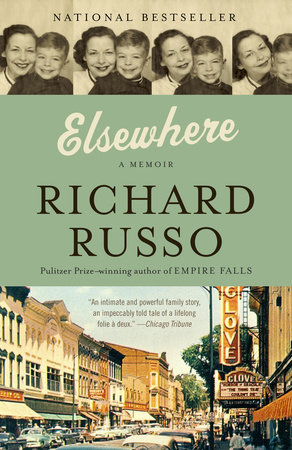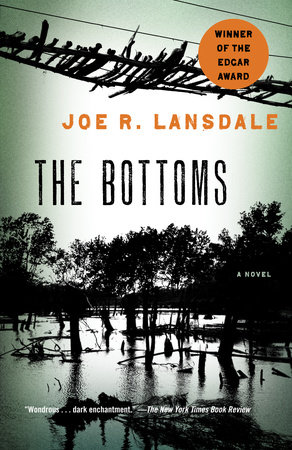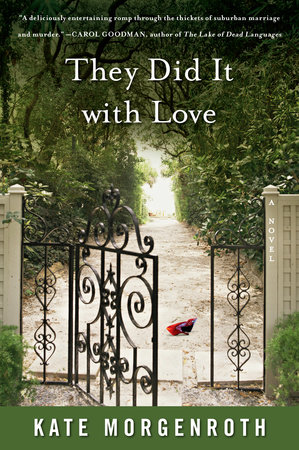Author Q&A
A Conversation with
M A R K S P R A G G
Q: You’ve said that the idea for this book began with the image of an embittered old man sitting alone on his porch. Where did this scene come from?
A: For me, most stories start as a single scene that refuses to leave my imagination. I’ve often wondered what prompts them, because they rarely–when they first start up–appear to be connected to anything that’s going on in my life. In this case, the scene was a man approaching seventy, sitting tightly in a chair on a porch, surrounded by a mob of half-feral cats. He kept reappearing in my mind–occasionally in my dreams–and inevitably I started the process of questioning myself about him. Why is he embittered? Does he own a chance for personal redemption? Who else shares his suffering? It’s the process of questioning that ends up defining some sort of story.
Q: Is the character of Einar Gilkyson, which this man became and who anchors the novel, based on anyone?
A: Einar wasn’t fashioned after any particular man I know, but his dedication to his daily work, the land he husbands, his family–whether blood or not–I’m sure has been influenced by the old men that participated in my upbringing: the old cowboys that worked my family’s ranch and with whom I lived in the ranch bunkhouse. None of them were anything like the cartoon notion we have of redneck, small-minded, bigoted working men. They were whole and complicated men, and for the most part reliable to themselves and those with whom they worked. They were well-traveled, almost all had fought in a war, all were at least bilingual. They were loyal, usually open-minded, unusually adaptable to new situations, and mostly democratic in their views. They valued honesty, and yes hard, reliable work from their fellows, and as a boy, they stood at the very center of my life.
Q: One of the most memorable voices in the book is that of Einar’s 10-year-old granddaughter. You don’t have children (and you’re a guy)–how did you write from her point of view so authentically?
A: I’ve been lucky enough to have godchildren in my life, and to have been close with them, to be trusted enough by them to hear their unguarded concerns; to occasionally be allowed to help with their problems. I believe we observe more closely that which we love, and so I’ve had these kids, once removed, that I’ve loved quite a lot. And I purposely made Griff of an age that is pre-sexual. She’s a tomboy, she’s very brave and must act older than she is, and yet she has the same fears and dreams and hopes of other ten-year-olds–whether boys or girls. I think there’s a lot of Griff in the way I remember myself at ten.
Q: You also write from the point of view of the girl’s mother, her abusive boyfriend, and Einar’s best friend, a black Korean War veteran. Which character was the most difficult to capture?
A: It was the abusive boyfriend that was by far the hardest. To try to accurately find his voice; his sense of being misunderstood, his burning righteousness, his sentimentality of violence. And then to make some attempt to represent his confusion and tilted view of life was, every time, enormously unsettling. Some days I would walk for hours, and I mean, up to three or four hours just walking on the prairie, trying to work myself up to writing a first draft of a chapter that might be convincing from Roy’s point of view.
Q: The contrasting voices–young and old, male and female, black and white–all contribute toward creating an updated picture of the contemporary American west, where the story takes place. Have other books accurately portrayed this part of the country or do we still tend to romanticize life there?
A: I believe we tend to romanticize our lives everywhere we live, and that we become expert in romanticizing lives that aren’t our own. It’s akin to claiming that the problems in your marriage belong to your partner and are not yours. And, of course, to label any region–or the literary representation of a region–as legitimate or apocryphal, is best left to the polemicists. I know I hugely admire the novels of Haruf, McMurtry, McCarthy, Momaday, Welch, Harrison, Silko, McGuane. They all write from the western part of this country, and in my experience, they all seem to be telling the truth. Their books are very different but never seem contrived. But, I could say as much about authors who write from other areas about which I know very little. Charles Baxter, J.M. Coetzee, Charles Frazier, Tim O’Brien, Larry Brown, Jhumpa Lahiri. It’s no doubt the authority of the voice that makes the story creditable.
Q: You grew up on the oldest dude ranch in Wyoming, a family business set on a remote stretch of the Shoshone National Forest. Tell us about your responsibilities on the ranch and how you broke away from the family business to become a writer.
A: My responsibilities were to the care and safety of the hundred and some horses we had, to the men and women and children from around the world we took into the greater Yellowstone wilderness on pack trips, and of course, to the land itself–which translates to working from roughly four in the morning until ten at night through the late spring, summer, and fall. I was lucky enough to love the work, and to work with men and women who did as well. As to breaking away from that business to become a writer, I guess I never saw writing and working on the land as exclusive. I kept journals as a boy, read frantically from my father’s library of over three thousand books, and always had aspirations to become a writer. If my parents had not sold the ranch, I like to imagine that I might be still happily living there, working the place, and writing books as well.
Q: What life lessons did you learn growing up out west, so in touch with nature and out of touch with pop culture?
A: At times, I look back on the place where I was raised as though it were from another century, and certainly in that we had no radio or television reception, a twenty-five mile drive to the one-room schoolhouse, and a fifty mile drive to the nearest small town, it was a sort of strange island that isn’t much representative of the childhoods of Wyoming men and women my age. But, it was the childhood gift I received and I loved its quietude, and then as a young man became anxious to experience a more urban life. I moved to New York City. I was excited by the new tempos, the mix of ideas, hungry for the museums and galleries I’d only read about, but I’ve always felt drawn back to vast and unpopulated places. I’m in my early 50s now and have lived around the country, and traveled when I could in Mexico and South America and Europe, but it is the wilderness areas of the West that have always seemed a refuge for me; a place I know well, where I can find solace. If that peculiar upbringing gave me anything that differs a great deal from what other adults take away from their childhoods it is that longing for a more profound sense of quietude. I do believe that growing up inside thirteen million acres of unfenced, never-husbanded land set up different rhythms in me.
Q: In your memoir, Where Rivers Change Direction, you write about your mentor and ranch bunkmate John, a WWII veteran and cowboy. Why was he so influential in your life? Does he show up in any characters in this book?
A: There’s quite a lot of John in the Mitch character. And I suppose I loved the man because he so obviously cared for me, and cared that I might become useful in the world. I was raised by parents, and men like John, who, through a combination of belief and necessity, felt that a childhood was an apprenticeship–suffered if need be, enjoyed when possible, but not necessarily celebrated. They believed that my formative years were just that, formative to the adult that I would some day be. I was aware that they held the man I was becoming in their mind’s eye, and geared my daily life toward the construct of that man. It was clear to me that if I were a studious and diligent boy I could sooner be useful in the world. In reviewing the journals I kept as a boy it’s also clear how anxious I was to become that man they imagined; to take on a man’s role in the world, to carry my own burden, even to become capable enough that I might be trusted to help others. John, and the other men I grew up around helped me to feel full of possibilities. I longed to quit being merely a boy. I wanted to be like them.
Q: Publishers Weekly has commented that your writing “weds the venerable Western tradition of frontier exploration of self and nature with the masculine school of writing stretching from Hemingway to Mailer.” What writers did you read when you were young? Which have most influenced your work?
A: I was awfully fond of Hemingway when I was a boy, no doubt for obvious reasons, but when I found Faulkner it changed my whole sense of the possibilities of language. I suppose everything I’ve tried to write since then has been an experiment in how best to structure a convincing narrative suspended between those two poles. I read, and reread, Welty, O’Connor, Lee, Capote, Steinbeck, a little later, Gide, Kazantzakis, Garcia Marquez, Hesse, Rilke, Miller. In short, I read every damn thing I could get my hands on. I do remember being greatly influenced by Lawrence Durrell. Also, from the time my brother and I were nine until we were in our mid-teens, my father required that we read a book a month of his choosing, and that at the end of the month we give an oral and written report of that book. My dad read largely for argument–and so his reading list included Darwin and Kant, Kierkegaard. Rousseau, Machiavelli, Spinoza, Emerson, Franklin, Plato, Marcus Aurelius. There were many others. There was a lot of chest-pounding and foot-stomping in our discussions. He told us that there were only two great themes. Our deaths, that is, our concerns about a possible afterlife, and our couplings in the face of that inevitability. I once asked him–it was when I was solidly a teenager–whether a truly great writer shouldn’t concentrate his efforts on necrophilia. He didn’t laugh. He suggested I reread Kierkegaard.
Q: The writing of this book is unusual in that you and your wife co-wrote the screenplay for Miramax’s film version of AN UNFINISHED LIFE, which will be released this fall, at the same time you were writing the book. How did the writing process work?
A: The outline of much of the book, and nearly all of the movie, happened over a year of car trips with my wife, Virginia. We talked for hundreds and hundreds of miles about these characters, their motivations, their disappointments and achievements. When we had that all done she went to work on the screenplay and I started to write the novel. Over the next several years Virginia edited my working drafts of the novel, and together we wrote the various drafts of the screenplay. It was a fascinating process, in that there were so many decisions about how best to present a single story through two different mediums. We tried, the best we could, to let the mediums determine the texture of the stories.
Q: How similar is the movie to the book?
A: I believe they both tell essentially the same story. It’s a story of family, and of forgiveness. It’s a story of extended family, of how our love extends to our dead; of our wondering about whether they might love us back, indeed, value us.
Q: Please tell us a little about the making of the film.
A: I honestly believe that Robert Redford has given the performance of a lifetime, that Morgan Freeman is one of the best actors of his generation, and that it shows in every scene he’s in, and that Jennifer Lopez embodies absolutely everything we’d hoped for in her character. Lasse Hallström, and his producing partner, Leslie Holleran, were absolute dreams with which to work; always inspiring, open, and deferential to the themes and language of the screenplay. I had admired Lasse’s films as much as any director working today, and Virginia and I have come out of this process with an even greater admiration for him as a director, and truly, as a man. Leslie has become like family. On a personal level, I don’t know what else we could have hoped for.





























